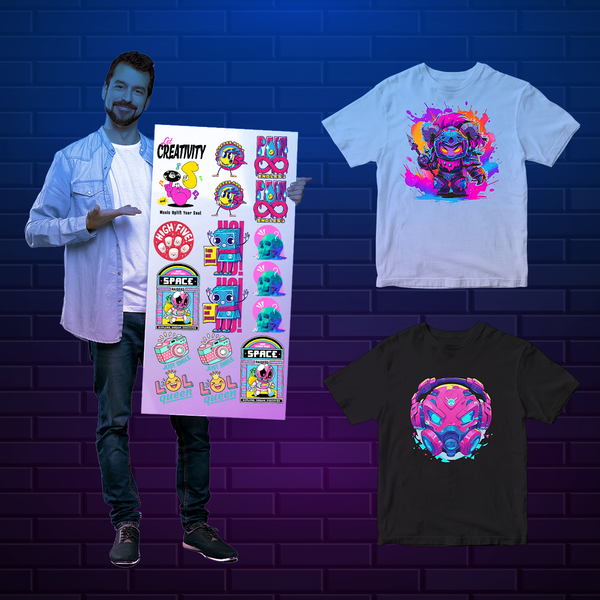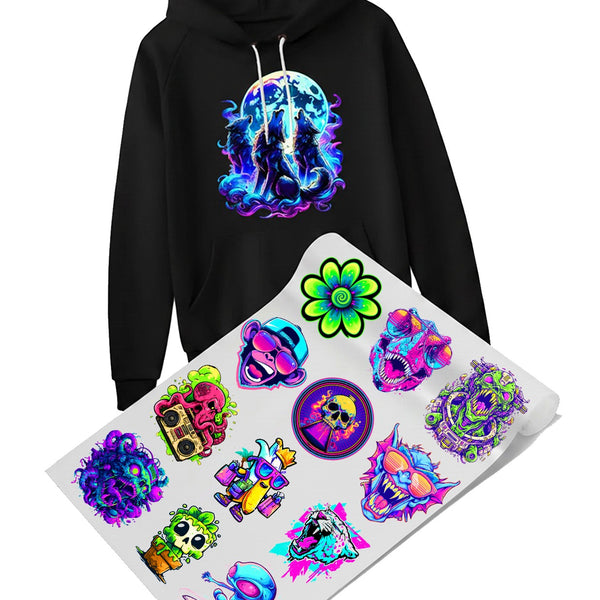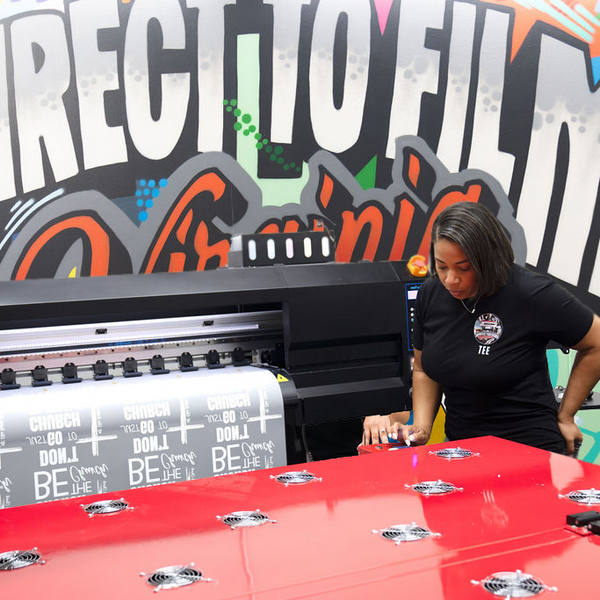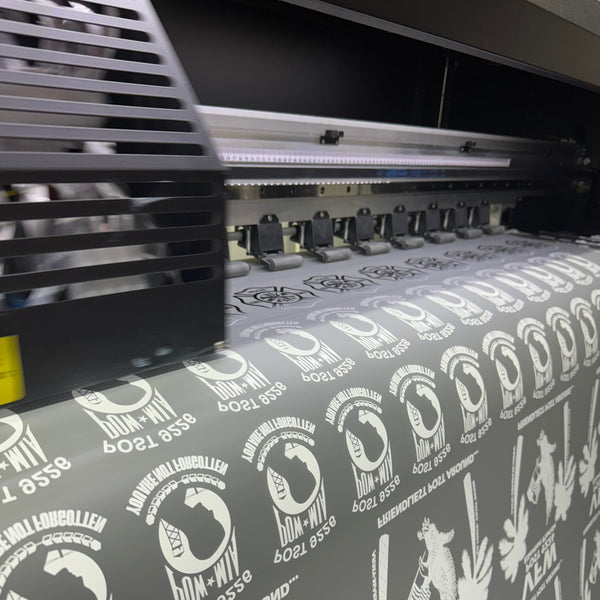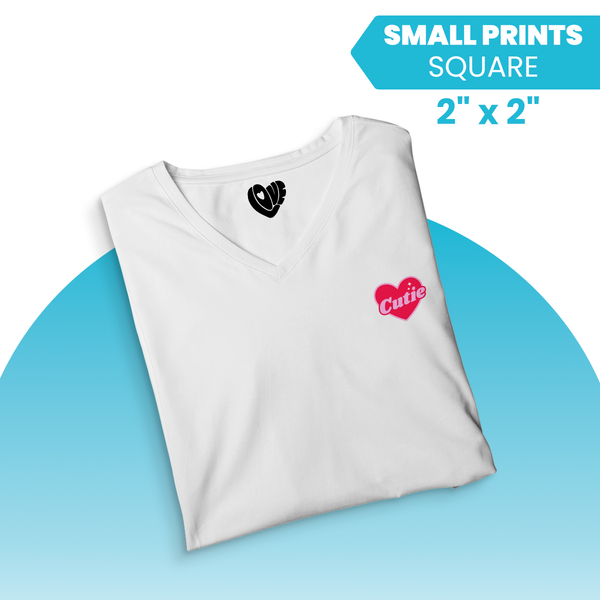Feeling a bit lost when it comes to making those awesome DTF designs really stick and shine on your garments? You are definitely not alone in this. Many creators find that the final step, applying dtf transfers with heat, is where the magic truly happens, or sometimes, where things can go a little sideways. A reliable heat press for dtf transfers is not just another piece of equipment; it is absolutely central to getting those bright, durable prints everyone wants and essential for adhering properly.
This guide will help you understand what really matters when picking a heat press for dtf transfers and how to use it effectively. This means you can stop guessing and start heat pressing with confidence. Getting this part right will make your custom apparel look professional and assist your designs in lasting wash after wash.
What Exactly Are DTF Transfers?
So, what is all the buzz about with DTF transfers anyway? DTF means Direct to Film, a modern method for creating vibrant graphics on various materials. This technique involves printing your design from a dtf printer onto a special dtf heat transfer film.
After printing, a powder adhesive is applied to the ink and cured, and then the design is ready to be transferred to fabric using heat and a quality dtf press. The process is popular for creating custom transfers with remarkable detail. Many businesses look for wholesale prices on dtf transfers dtf once they scale up production.
One of the big reasons people love DTF is its versatility; you can use it on so many different fabrics, like cotton, polyester, blends, and even tougher stuff like canvas or blanks blank for various projects. The colors come out super vibrant, and the print feels surprisingly soft on the shirt, often softer than traditional transfer vinyl. Compared to some other methods like DTG printing or even some screen printed techniques, many find DTF gives great results without a super complicated process for heat transfer dtf.
The durability is also a significant factor, with properly applied transfers dtf holding up well to repeated washing. For a general overview of printing techniques and their history, you can explore resources like the School of Art at RIT for foundational knowledge on visual media. When working with a gang sheet, you can maximize your film usage by grouping multiple designs.
The Heart of Your DTF Operation: The Heat Press
Why is your choice of heat press so important when you are working with dtf transfers? The heat press, or dtf heat press as it's sometimes called specifically for this, performs critical jobs in the heat printing process. It melts that special adhesive powder on the back of your dtf heat transfer film.
This melted adhesive then allows the ink to bond securely with the fibers of your garment. Without correct heat and pressure from your dtf printing heat press, the dtf heat transfer will not be successful. The quality of your heat press dtf applications relies heavily on this piece of equipment.
If your transfer press does not provide even heat or consistent pressure, you are in for some trouble. You might see parts of your design peeling off or issues with adhering properly. Or the colors could look faded or just not right, especially after a few trips through the washing machine, which is a common way to prevent transfer longevity. Having a dependable heat press for dtf transfers, a true dtf transfer heat press, is a game-changer for quality output.
Choosing Your Champion: Key Features in a Heat Press for DTF Transfers
Picking the right heat press for dtf can feel like a big decision because it is. This heat transfer press buyer's guide section will highlight several features you really want to pay attention to. These will directly impact the quality and consistency when you press dtf transfers.
Temperature Accuracy and Consistency
This is super important for DTF. Your transfers need a specific temperature to bond correctly and ensure the dtf heat transfer is complete. If the heat is too low, the adhesive will not melt properly, and your design will not stick well; if it is too high, you risk scorching the fabric or even damaging the transfer itself.
Look for presses with reliable digital temperature controls and readouts. Also, make sure the upper platen distributes heat evenly across its entire surface; cold spots are a common headache and can ruin your custom transfers. Good recovery time, meaning how quickly the platen reheats between presses, is also beneficial for production environments.
Pressure Control and Evenness
Just like temperature, pressure needs to be just right for DTF; most dtf transfers require medium to firm pressure. The press must apply this pressure evenly across the whole design. Some presses have manual pressure adjustments, often a large knob, while others might be pneumatic (requiring an air compressor, like some air fusion models) or even fully automatic like a dual air fusion press, offering precise and repeatable pressure settings.
Uneven pressure leads to parts of the transfer not sticking or uneven curing, which is really frustrating and a quick way to waste materials. Ensure the pressure system is robust and easy to adjust. Some advanced models like those with dual air capabilities offer exceptional pressure consistency.
Platen Size and Type
Think about the size of the designs you will be heat pressing most often. You will want a heat press platen that is a bit larger than your biggest typical transfer. This gives you some wiggle room and makes sure the entire design gets even heat and pressure.
Common platen sizes range from 9x12 inches for smaller items or a craft heat press, up to 16x20 inches for standard t-shirts, or even larger for oversized designs and all-over prints. Consider if you will need interchangeable platens for different items like sleeves, legs, or even potentially water bottles if exploring UV DTF or other compatible transfer types. A sturdy work surface is important for any press, but especially larger ones.
Type of Heat Press: Clamshell vs. Swing-Away vs. Drawer
There are a few main styles of heat presses, each with its pros and cons for DTF work when you press transfer designs. Your choice can impact workflow and space requirements. Some users even look for a printer buyer's guide that pairs well with their chosen press type.
A clamshell heat press opens like a clam's shell, with the upper platen lifting away from the lower one at an angle. They are often more compact and can be a bit more budget-friendly, making a clamshell heat or clam heat model attractive for beginners. However, the area for arranging your garment and transfer can be a bit tight, and you have to be careful not to touch the hot upper platen; an auto clam feature can help with safety by opening automatically. Some models, like certain Hotronix auto open clamshells, are well-regarded.
Swing-away presses have an upper platen that swings completely away from the lower platen, either to the side or upwards and away. This gives you a clear, open space to work on, which many people prefer for accurately placing dtf transfers and for safety. They do need a bit more space around them to operate, but this style is often recommended when you use a heat press for dtf transfers frequently because of the ease of layout and reduced risk of burns. Brands like Geo Knight offer popular swing-away models.
Drawer-style presses have a lower platen that slides out like a drawer, similar to what you might find in some high-end DTG printing setups. This also gives you great access for placing your items and aligning transfers custom designs. It combines some of the space-saving aspects of a clamshell heat press with the layout ease of a swing-away, offering a good compromise for many workshops.
Durability and Build Quality
A heat press is an investment, so you want one that is built to last, especially if you are producing wholesale prices items. Look for sturdy construction, usually with a steel frame. Check out reviews and see what people say about the longevity of different models and the quality of their customer service.
A good warranty can also give you some peace of mind. Some sellers offer extended warranties or have robust support systems; it is worth checking if they have a rewards contact or loyalty program if you plan on future purchases. Accessing your account via a password login might be necessary for support or order history.
Ease of Use and Safety Features
Your heat press should be straightforward to operate. Clear digital displays for time and temperature are a big help for consistent results when applying dtf transfers. Consider safety features too, like an emergency stop button, auto-open functionality (common in auto clam models), or heat-resistant coatings on handles.
Working with heat always requires care, so these features are important to prevent transfer mishaps or injuries. Some heat presses even come with built-in alerts for over-temperature or over-pressure. When purchasing, check for options like free shipping or ground shipping to manage costs.
Nailing the Perfect Press: DTF Temperature and Time Settings

Getting your settings right is where the film meets the fabric. While you should always start with the recommendations from your DTF transfer supplier, there are some general guidelines for applying dtf. For specific guidance, transfer film manufacturers like Example DTF Film Supplier often publish their suggested settings for their dtf heat transfer film.
Typically, DTF transfers press at temperatures between 280°F and 325°F (that's about 140°C to 165°C). The pressing time usually ranges from 8 to 15 seconds. Pressure is almost always medium to firm. These are just starting points, though; the exact settings can vary based on the fabric, the specific transfers dtf you are using, and even your particular heat press.
Always, always do a test press first, especially if you are working with new materials, blanks blank, or transfers. This little step can save you a lot of wasted shirts and frustration. Also, pay close attention to whether your transfers are hot peel or cold peel, as this determines when you remove the film after pressing; incorrect peeling is a surefire way to ruin the application.
It's a good practice to keep a log of settings that work well for different garment types and transfer batches. Factors like garment thickness and even ambient room temperature can sometimes slightly influence the ideal settings. Using heat tape can be beneficial for holding small or intricate designs in place during the heat pressing process.
Your DTF Pressing Playbook: A Step-by-Step Guide
Ready to press your first DTF transfer with your dtf heat press? It is not too complicated once you get the hang of it. Here is a simple breakdown of the process for your dtf transfer heat press.
Preparation is Key
First things first, get your garment ready. It is a really good idea to pre-press your shirt or fabric for about 5 seconds. This removes any moisture and smooths out wrinkles, giving you a nice flat surface for the transfer and helping to prevent transfer issues later.
Next, carefully position your DTF transfer on the garment. Make sure it is straight and exactly where you want it. Some people like to use a bit of heat-resistant heat tape to hold the transfer in place, especially on slippery fabrics or with larger designs from a gang sheet; this can prevent it from shifting when you close the press.
The Pressing Process
Now, set the correct temperature, time, and pressure on your heat press for dtf transfers based on your supplier's advice and your test presses. Place the garment with the transfer onto the lower platen of your heat press. Many people use a protective sheet, like a Teflon sheet or parchment paper, on top of the transfer.
This helps protect both the transfer and your heat press upper platen from any ink residue or adhesive bleed. Once everything is aligned, close the press. Let it run for the set time; an accurate timer is crucial for consistency when you press dtf.
Peeling and Post-Press (If Applicable)
This next step is crucial: peeling the film. DTF transfers are either hot peel or cold peel. Hot peel means you remove the film carrier almost immediately after opening the press, while it is still very warm.
Cold peel means you need to let the transfer cool down completely, or at least to lukewarm, before peeling. Peeling at the wrong time can ruin the transfer and impact how well it's adhering properly. Always follow the instructions for your specific transfers custom made or stock.
Some people like to do a quick second press for 3-5 seconds after peeling, sometimes with parchment paper or a matte finishing sheet on top. This can sometimes improve the washability and give the design a softer feel or a matte finish. It is optional but worth experimenting with to see if it enhances your dtf transfers dtf results.
Fixing Frustrations: Troubleshooting Common DTF Pressing Issues
Even with the best heat press for dtf transfers, sometimes things do not go perfectly. Do not worry, most issues are fixable. Here are a few common problems encountered during heat printing and how to tackle them.
If your transfer is not sticking completely, it could be a few things. Your temperature might be too low, the pressure might be insufficient, or you might not have pressed it for long enough. Try increasing these settings slightly, one at a time, and test again.
Do the colors look dull, or is the fabric around the design a bit discolored or scorched? This often means your temperature is too high, or you pressed it for too long. Reduce your temp or time and see if that helps prevent transfer damage.
Is the design peeling or cracking after just one or two washes? This is a classic sign of an incomplete cure, meaning the adhesive didn't bond fully. It probably means the initial press was not hot enough, long enough, or with enough pressure to fully bond the adhesive for proper dtf heat transfer. Also, make sure you are following the correct peeling procedure and that your heat press for dtf offers consistent platen temperature.
Are you seeing press marks from the edges of the platen on your garment? This can happen with certain fabrics, especially synthetics. Try using a pressing pillow inside the garment to raise the print area or use a smaller lower platen if available. Also, ensure your pressure is not excessively high for that specific fabric type; sometimes slightly lower pressure and a teflon sheet can minimize this.
Image ghosting, where you see a faint shadow of the design, can occur if the transfer paper shifts during opening or closing the press. Ensure the transfer is secured with heat tape if needed. Using an auto clam or swing-away press can sometimes help reduce accidental movement compared to a manual clamshell heat model.
Keeping Your Press in Prime Condition
Your heat press works hard for you, so a little care goes a long way in maintaining its performance for all your heat pressing needs. Regularly clean your upper platen and lower platen. Adhesive or ink residue can build up over time and cause problems with future applications or stain garments.
Usually, you can wipe down a cool platen with a soft cloth and a mild cleaner (check your press manual first, as some cleaners can damage coatings.). Periodically check for any loose parts or wear and tear. Make sure electrical cords are in good shape and that the press is on a stable work surface.
If your press has any calibration features for temperature or pressure, it is a good idea to check those occasionally to maintain accuracy. Proper maintenance means your dtf press serves you well for a long time, consistently producing quality custom decals and apparel. Don't forget to consult your equipment's documentation, and if you run into issues, reaching out to customer service for your specific brand, be it Geo Knight or another, can be very helpful.
Level Up Your DTF Game
Once you are comfortable with the basics of using your heat press for dtf, you can start exploring more. DTF works on a variety of materials beyond standard t-shirts, but you might need to adjust your settings slightly for different fabrics. For example, pressing on polyester or delicate synthetics might require a lower temperature or shorter time than pressing on 100% cotton to avoid scorching or dye migration.
If your press has interchangeable platens, you can experiment with smaller platens for sleeves, pant legs, or even hats (if it is a cap press attachment). You can also achieve different finishes with your transfers dtf. For instance, using a matte finishing sheet for that final quick press can take away some of the shine and make the transfer feel even more integrated into the fabric, mimicking high-end retail prints.
Consider the source of your dtf transfers; whether you print them yourself with a dtf printer or buy pre-made custom transfers, quality can vary. Experiment with different suppliers. While this guide focuses on garment DTF, the broader field of direct-to-film includes UV DTF, which can be used for applying custom decals to hard surfaces like water bottles or promotional items, though this typically requires different equipment and curing processes not involving a standard heat transfer press.
Using a gang sheet efficiently can also save costs by printing multiple designs on one dtf heat transfer film. As you grow, you might investigate more advanced heat presses, like those offering air fusion technology for automated pressure or even dual air fusion systems for high-volume shops. Even a quality easy™ brand craft heat press or a similar brand craft heat press can be a starting point for hobbyists, though for business, a more robust dtf printing heat press is usually necessary.
Conclusion
Getting fantastic, durable results with your DTF projects really hinges on using the right equipment and techniques. Your heat press for dtf transfers plays a central role in this process, impacting everything from adhesion to the final look and feel. Choosing a press, whether it is a simple craft heat press or a professional-grade machine, with accurate temperature, even pressure, and the right features for your needs is a smart investment for your heat printing endeavors.
Remember to always follow your transfer supplier's guidelines, whether for standard transfer paper or specialized dtf heat transfer film, and do not be afraid to test settings for different fabrics and blanks blank. With a little practice, your heat press for dtf will help you create amazing custom apparel and other items that look professional and last. For more tips and tricks, view blog posts from reputable suppliers and community forums. Some companies offer a loyalty program or rewards contact for repeat customers, which can be beneficial if you plan to purchase more supplies or equipment, sometimes accessible after a password login to their customer portal; also look into their privacy policy when signing up.







